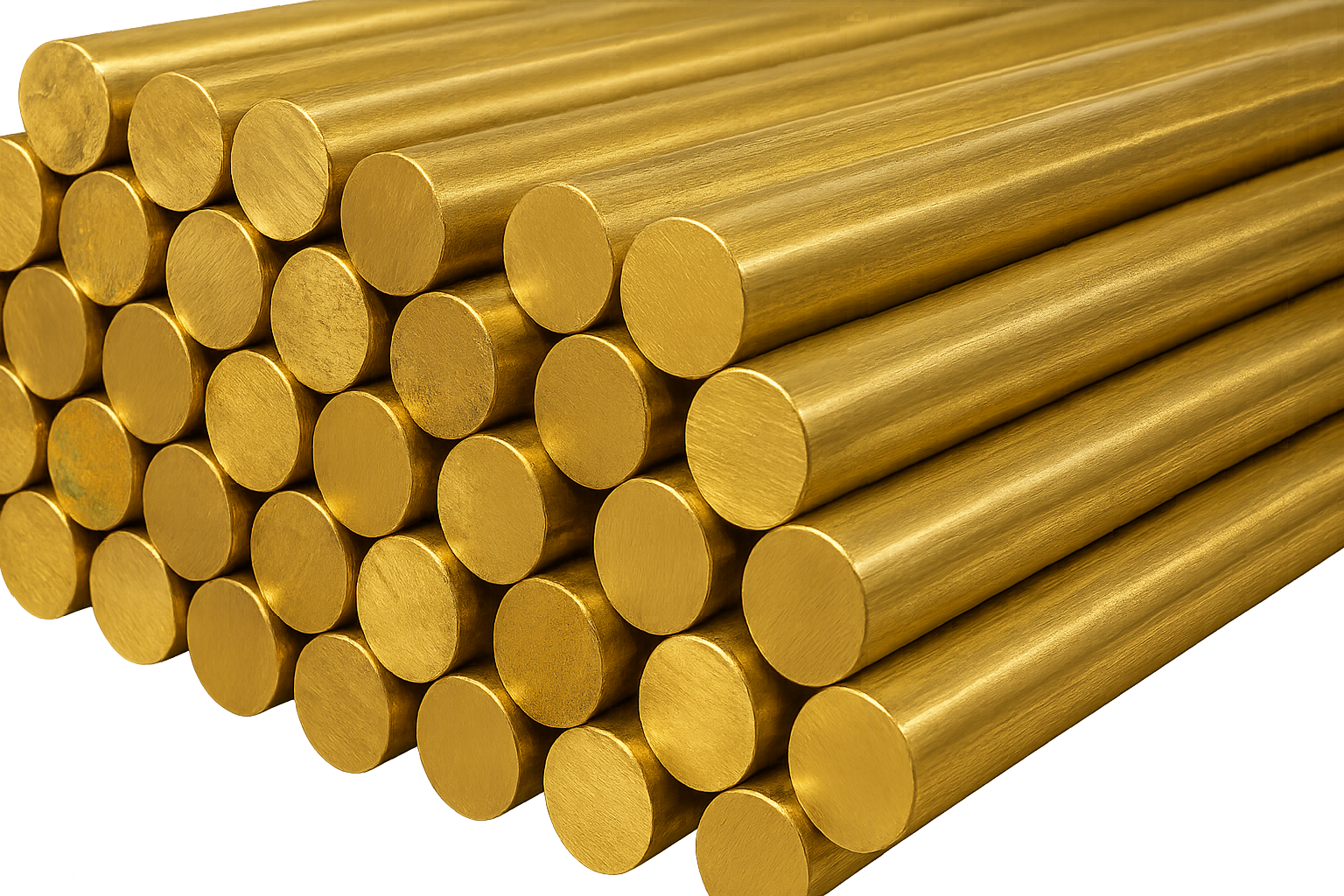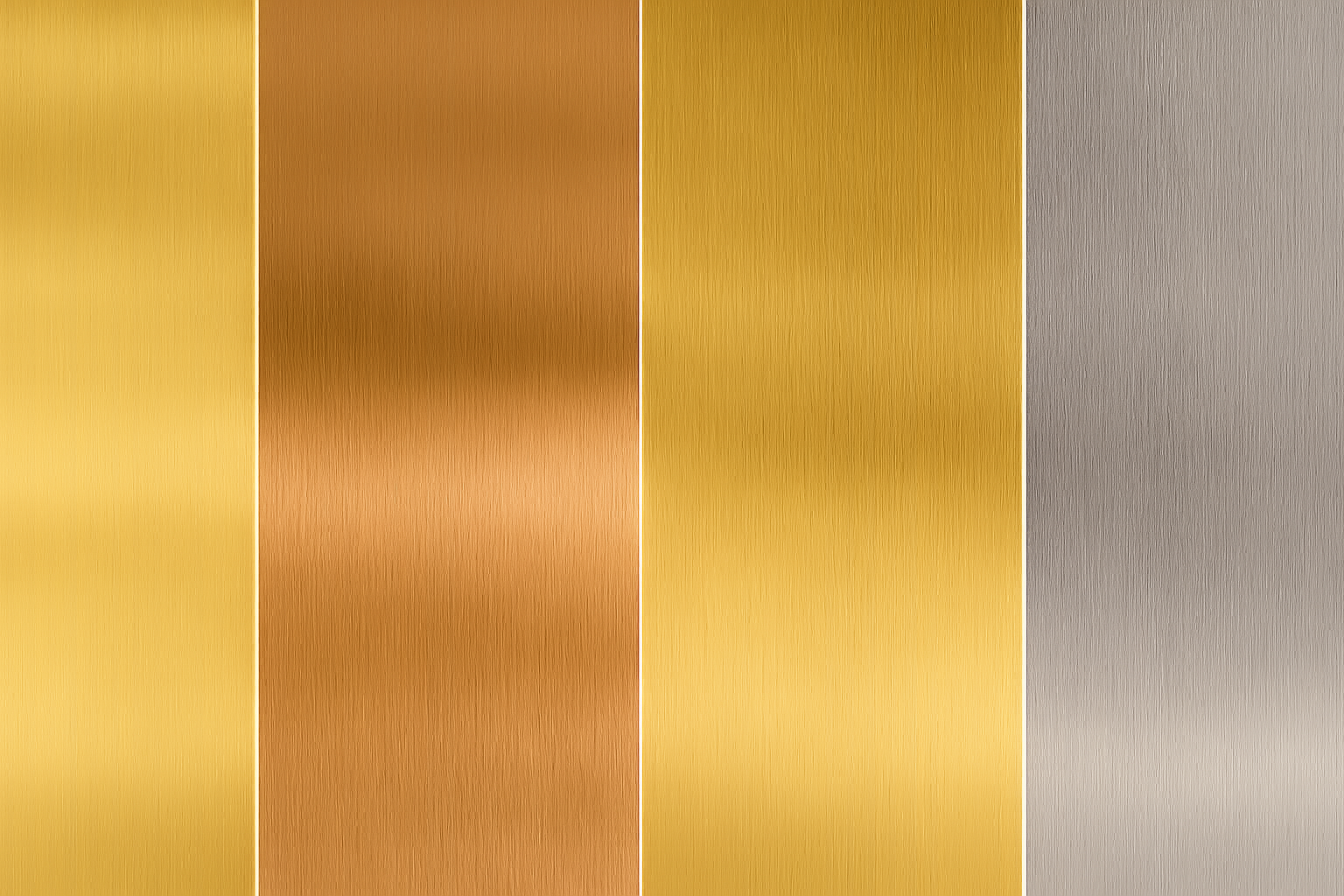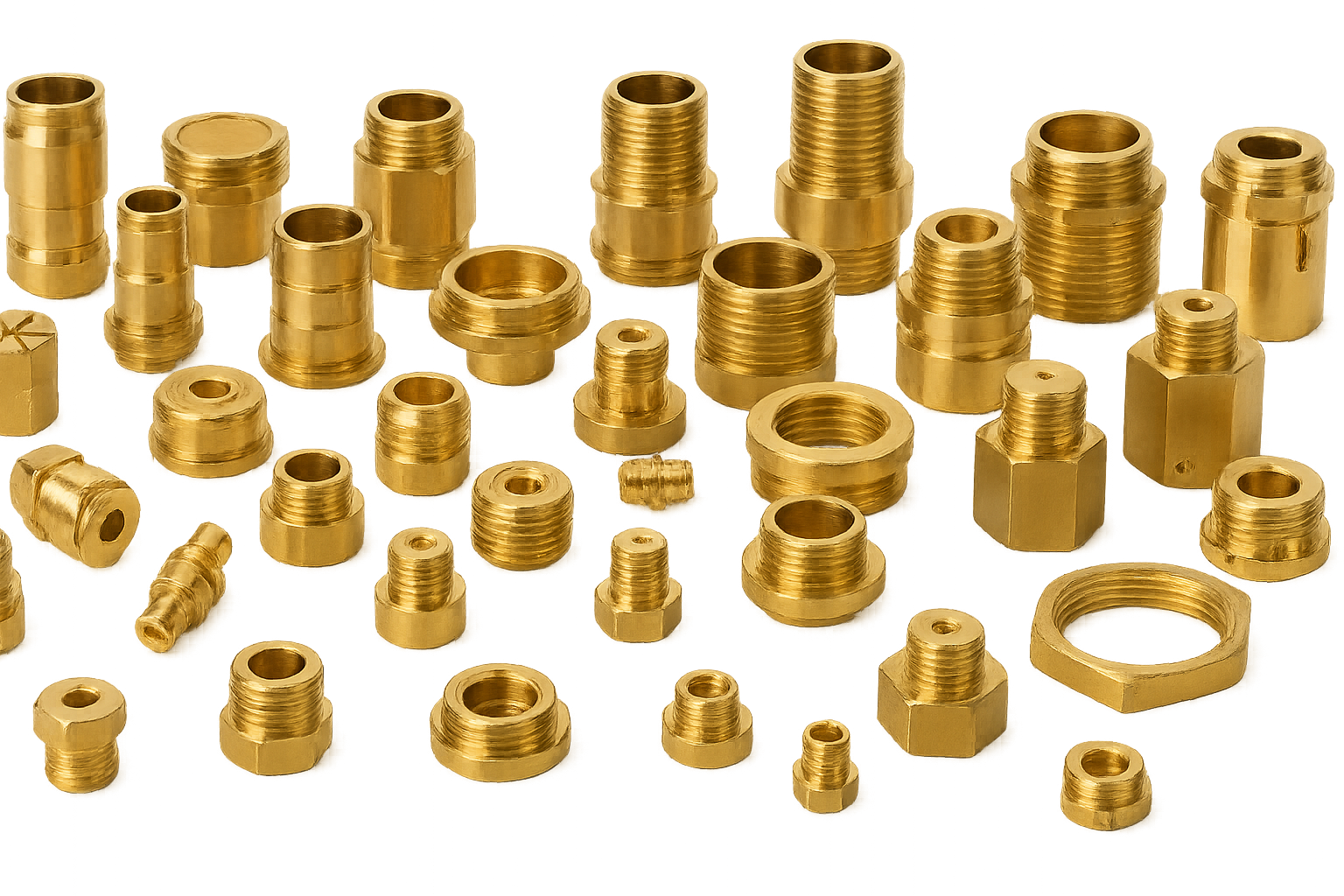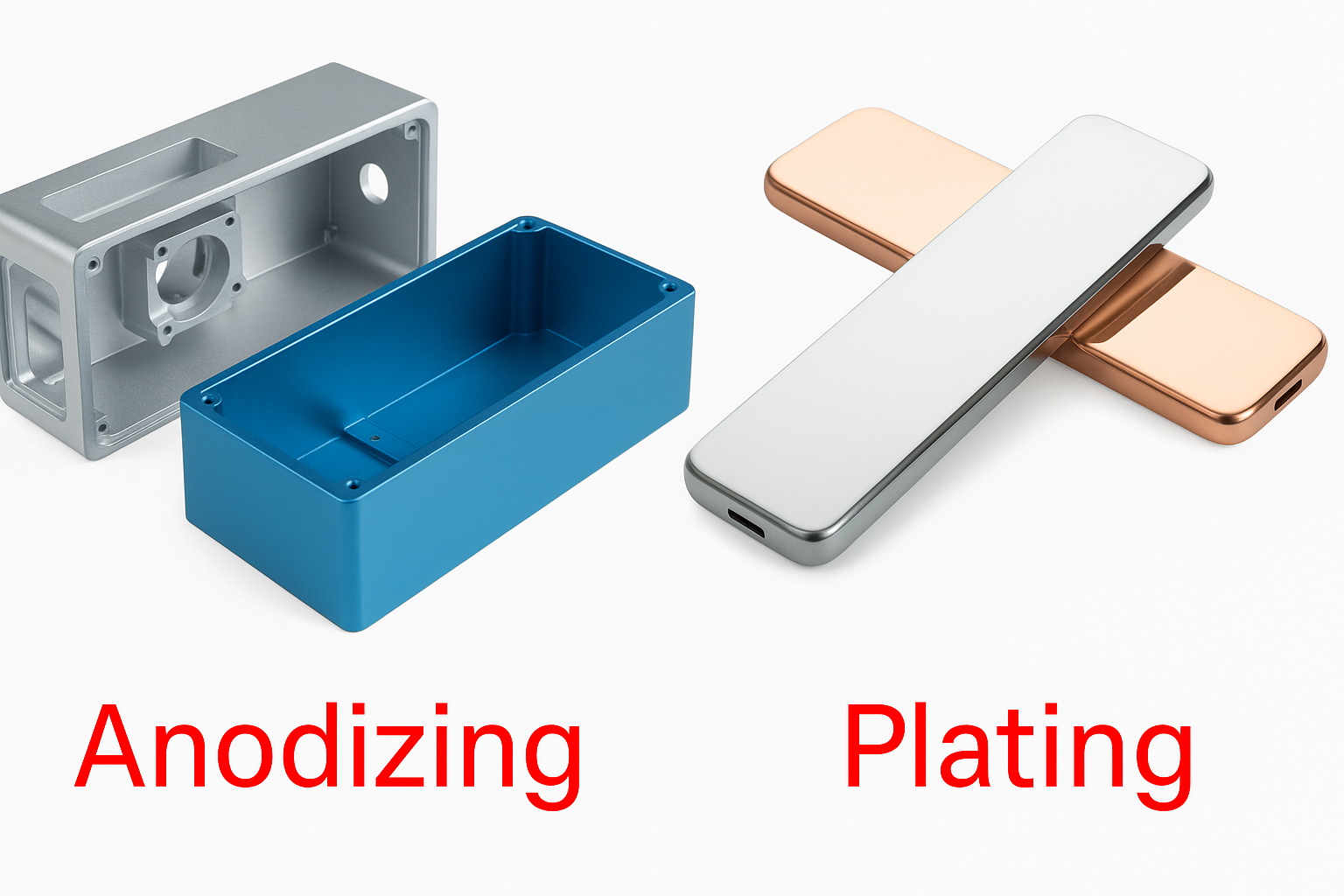Brass anodizing is an electrochemical surface treatment designed to enhance the durability, 外観, and corrosion resistance of brass parts. It involves the controlled formation of a stable oxide layer on the brass surface, significantly increasing its performance across various applications. This detailed guide covers everything you need to know about brass anodizing, from process steps and quality checks to benefits, アプリケーション, and even methods to reverse anodizing.
How to Perform Brass Anodizing
Cleaning Brass Parts
Begin by thoroughly cleaning the 真鍮 surface to remove oils, ダート, および汚染物質. This step is essential for achieving an even anodized layer. 最初は, use soap and water for basic cleaning, followed by specialized chemical degreasers. Rinse thoroughly with warm water to eliminate residue.
Preparing the Anodizing Solution
The anodizing solution commonly used for brass comprises phosphoric acid and distilled water. Prepare a mixture with one part phosphoric acid to ten parts distilled water. Always use a non-metallic container to avoid unwanted chemical reactions. Depending on your desired finish, you may include specific additives or dyes at this stage.
Applying the Solution
Apply the prepared anodizing solution evenly over the brass part, either by spraying or immersing the part completely. Allow the solution to rest on the brass for approximately 30 minutes to ensure thorough absorption. その後, rinse the brass with warm water and dry it completely to avoid water spots or corrosion.
Anodizing Brass
次, the brass is anodized using a controlled electrical current in an anodizing machine. Follow the manufacturer’s instructions to set up the equipment. Ensure precise control of the voltage, current, and temperature, as these significantly influence the quality and consistency of the anodized layer.
Types of Brass Anodizing Processes
真鍮, an alloy composed primarily of 銅 と亜鉛, behaves uniquely when anodized. The most widely used anodizing process for brass is phosphoric acid anodizing due to its effectiveness in consistently producing durable, attractive finishes.
Available Color Options for Brass Anodizing
Anodized brass naturally exhibits its inherent brass hue. しかし, dyes allow for an extensive range of color options, 含む:
黒
Brown
Blue
Green
Purple
This flexibility in color makes anodized brass ideal for decorative and aesthetic applications.
品質管理: Evaluating Successful Brass Anodizing
Quality assurance is critical in brass anodizing. The following are essential parameters to verify:
厚さ
Measure the anodized layer thickness using a micrometer or a thickness gauge. Ensure the layer meets industry-standard thickness specifications to balance durability and flexibility. Excessively thick layers risk brittleness, while too thin layers compromise corrosion resistance.
Coat Adhesion
Conduct an adhesion test by applying adhesive tape onto the anodized surface and peeling it off. If the coating remains intact, the anodizing process is successful.
耐食性
Perform salt spray or environmental tests to evaluate corrosion resistance. A high-quality anodized coating will show no signs of corrosion or degradation following these tests.
Color Uniformity
Visually inspect the anodized part for uniform color distribution. An even, consistent color indicates a properly anodized surface.
Benefits of Brass Anodizing
Brass anodizing offers numerous advantages, 含む:
Enhanced Durability: The anodized layer significantly improves wear resistance.
Corrosion Protection: Acts as a protective barrier against environmental factors.
Visual Appeal: Provides versatile and attractive coloring options.
Environmental Safety: 無毒, stable, and environmentally friendly process.
Easy Maintenance: Simple cleaning with mild detergent.
コスト効率: Offers a cost-effective surface treatment option with minimal ongoing maintenance expenses.
Applications for Brass Anodizing
Due to its enhanced features, anodized brass is extensively utilized across diverse sectors:
建築コンポーネント: Door handles, ノブ, railings, and window frames.
ジュエリー: High-quality pendants, イヤリング, and bracelets.
Lighting Fixtures: Decorative chandeliers and lamps.
エレクトロニクス: Corrosion-resistant and conductive components.
Decorative Items: Ornamental picture frames, vases, and artistic pieces.
自動車産業: Vehicle emblems and interior decorative parts.
医療機器: 歯科用具, 手術器具, and orthodontic brackets.
Methods to Remove Anodizing from Brass
たまに, removing the anodized layer may become necessary. Two primary methods include:
Mechanical Abrasion
Utilizing abrasive materials like sandpaper to manually remove the coating. While straightforward, this method can be labor-intensive and time-consuming.
Electrochemical Etching
Applying electrical current to break down and remove the anodized oxide layer. This method provides precise removal but requires specialized equipment and safety measures.
Brass Anodizing vs. Plating, 絵画, and Powder Coating: Which is Best?
Choosing the right finish for brass parts can be tricky—each method has its strengths. Let’s compare brass anodizing directly with plating, 絵画, and powder coating to help you decide.
Brass Anodizing vs. Plating
プロセス:
陽極酸化処理 creates a protective oxide layer by using electricity and a chemical solution. The brass itself forms this durable surface coating.
Plating, 一方で, adds a thin metal layer (like nickel, クロム, または金) onto the brass through electrochemical deposition.
外観:
陽極酸化処理 often leaves brass looking natural, 透明, or lightly colored. It highlights brass’s unique metallic look.
Plating completely covers brass, giving it the appearance of the plating metal (例えば, shiny chrome or elegant nickel finish). The original brass color is concealed.
耐久性:
陽極酸化処理 provides excellent resistance against corrosion, 傷, and wear because the oxide layer chemically bonds to the brass.
Plating offers strong protection initially but can peel, チップ, or wear down over time, especially if the plating is thin or not properly applied.
料金:
陽極酸化処理 typically costs less than premium metal plating (especially gold or chrome plating).
Plating is generally pricier due to more complex equipment and expensive materials used.
Brass Anodizing vs. 絵画
プロセス:
陽極酸化処理 chemically alters the brass surface, forming a permanent oxide layer.
絵画 involves applying liquid paint onto brass and allowing it to dry, forming a simple surface coating.
外観:
陽極酸化処理 maintains brass’s metallic appearance and can add subtle colors through dyes.
絵画 fully covers brass, offering unlimited color choices but losing the natural metal appearance.
耐久性:
陽極酸化処理 is significantly more durable, 欠けに強い, 引っ掻く, と腐食.
Painted surfaces can easily scratch, チップ, or fade under sunlight or tough environments, requiring regular touch-ups.
料金:
陽極酸化処理 is initially more expensive than simple painting, but its low maintenance and longer lifespan make it more economical in the long run.
絵画 is cheaper upfront, yet ongoing maintenance costs (再塗装, touch-ups) often add up over time.
Brass Anodizing vs. 粉体塗装
プロセス:
陽極酸化処理 forms a protective oxide layer directly bonded to brass through electrochemical processes.
Powder coating involves spraying dry, colored powder onto brass parts and baking them in high heat to form a durable protective finish.
外観:
陽極酸化処理 allows brass’s natural metallic look to show through clearly, adding subtle and attractive colors.
Powder coating fully covers the brass surface, providing a smooth, even, and solid-colored finish that hides the original brass texture.
耐久性:
陽極酸化処理 offers exceptional corrosion resistance and durability due to the oxide layer bonding chemically to brass.
Powder coating also provides excellent protection against impacts, 引っ掻く, と腐食, making it ideal for heavy-use scenarios. しかし, when damaged, powder coating is difficult to repair seamlessly.
料金:
陽極酸化処理 and powder coating typically have similar initial costs. The main difference is that anodizing may offer longer-term value due to less frequent maintenance.
Powder coating has comparable upfront costs but might require more extensive refinishing if damaged.
それで, どの方法を選択する必要がありますか?
Choose Anodizing if:
You prefer the natural metallic look of brass, 優れた耐食性, minimal maintenance, and good long-term cost-effectiveness.
Choose Plating if:
You want a shiny, luxurious appearance (such as chrome or gold finish), and you’re prepared for slightly higher costs and potentially less durability.
Choose Painting if:
You’re looking for a low-cost, quick option and you’re comfortable with periodic repainting and regular maintenance.
Choose Powder Coating if:
You need exceptional durability and impact resistance, prefer solid color finishes, and don’t mind fully covering the brass’s natural appearance.
By clearly understanding these differences, you can pick the perfect finish that matches both your project needs and your budget.
結論
Anodizing brass effectively improves its durability, 美学, and resistance to corrosion, making it highly valuable in various industries. Proper execution of the anodizing process, along with rigorous quality checks, ensures superior performance and longevity of brass products. Whether enhancing the appeal of decorative items or improving functionality in industrial applications, brass anodizing consistently delivers exceptional results.
よくある質問 (よくある質問)
- Can you anodize all types of brass?
Not all brass alloys respond equally to anodizing. While most common brass alloys can be anodized effectively, those with higher zinc content may produce inconsistent finishes due to uneven oxide formation. It’s best to test a small sample first to verify results. - How long does the brass anodizing finish last?
A properly applied anodized finish on brass can last many years, depending on usage and environmental exposure. Under typical indoor conditions, anodized brass can maintain its appearance and protective properties for decades with minimal maintenance. - Is anodized brass safe for food-contact or medical applications?
Anodized brass is generally safe, stable, and non-toxic once fully cured. しかし, for direct food-contact or sensitive medical applications, ensure compliance with relevant FDA or industry-specific guidelines and standards. - Can brass be re-anodized after removing an existing anodized layer?
はい, brass can typically be re-anodized after the existing layer is removed through methods like mechanical abrasion or electrochemical etching. Proper cleaning and preparation steps are essential before repeating the anodizing process. - Does brass anodizing affect electrical conductivity?
はい, anodizing slightly reduces the electrical conductivity of brass because the oxide layer acts as an insulating barrier. If conductivity is essential for your application, selective masking or alternative finishing methods such as plating might be more suitable.
Additional Resources:
Detailed Brass Anodizing Process – Piping Mart
Brass Finishing Techniques – KDM









